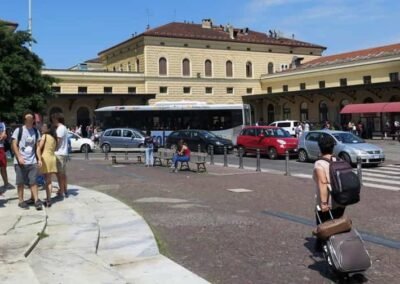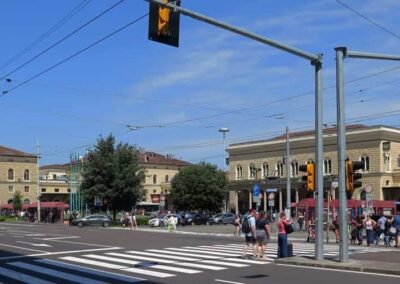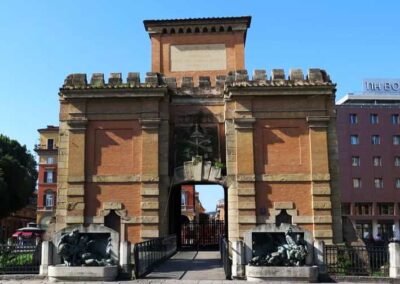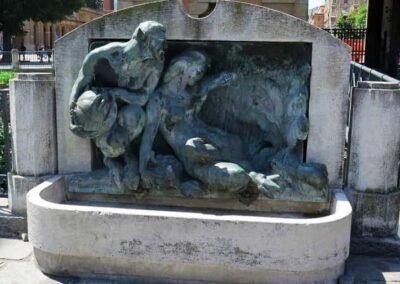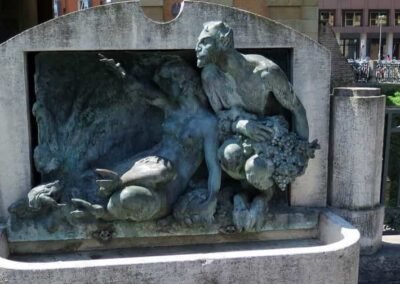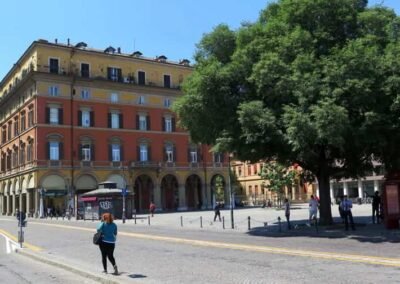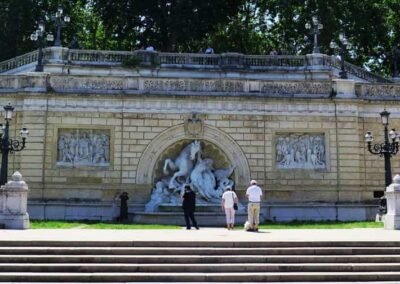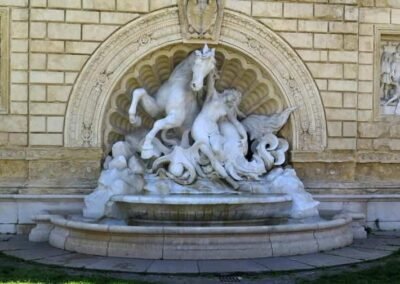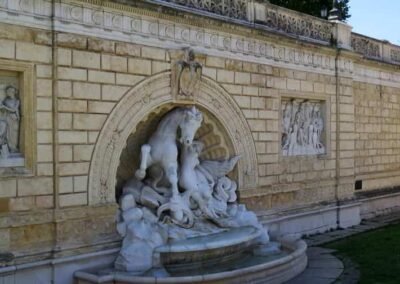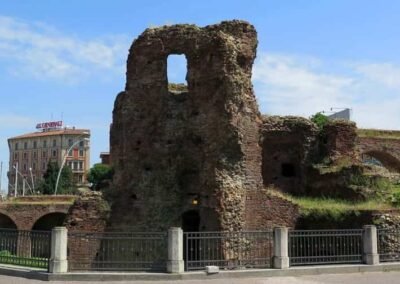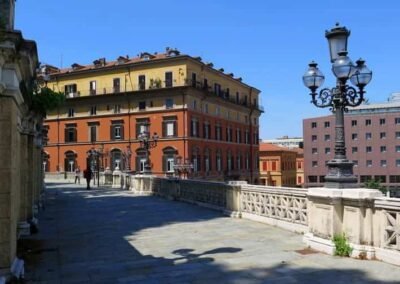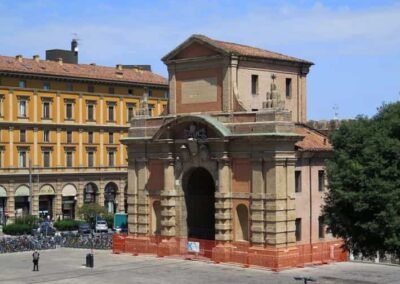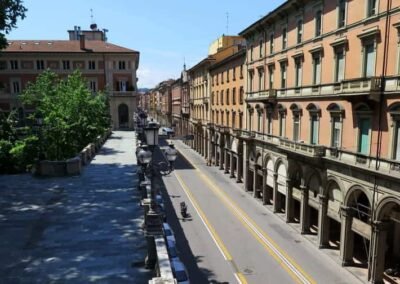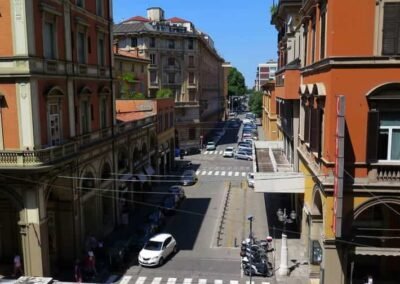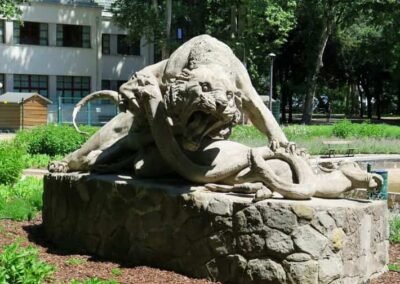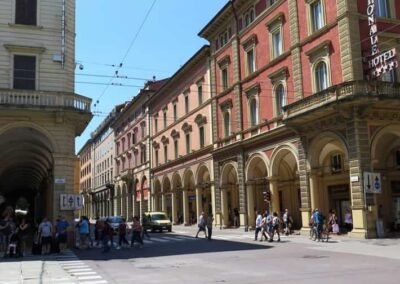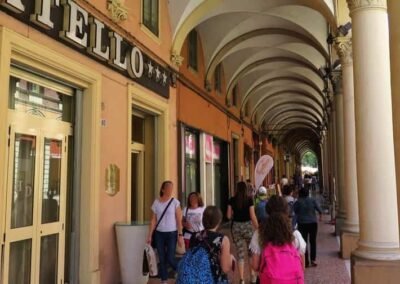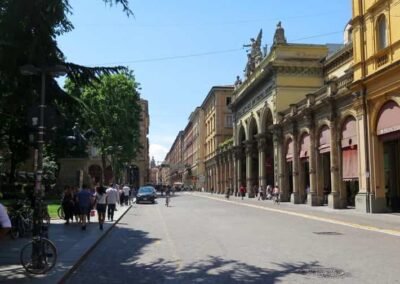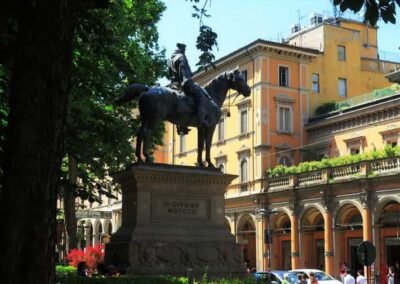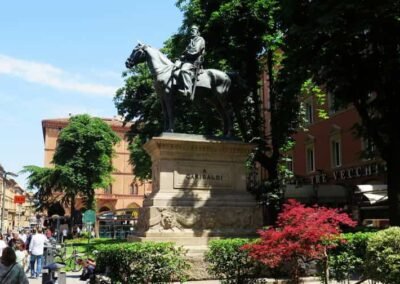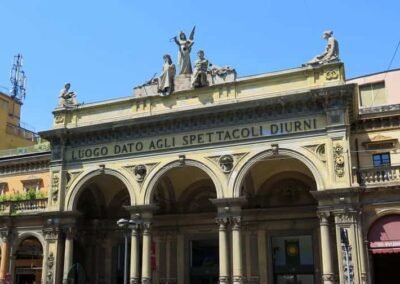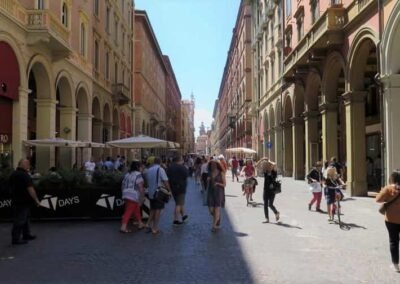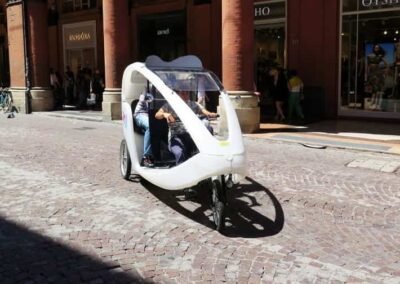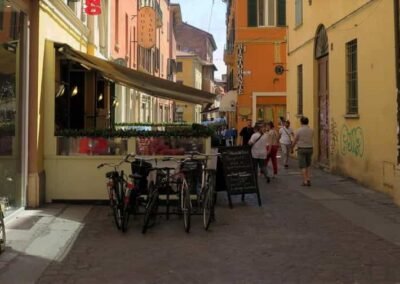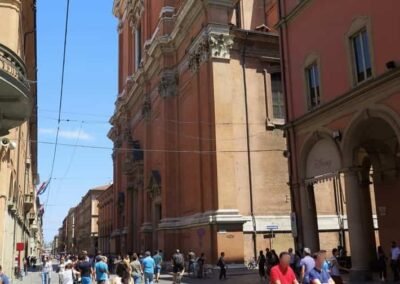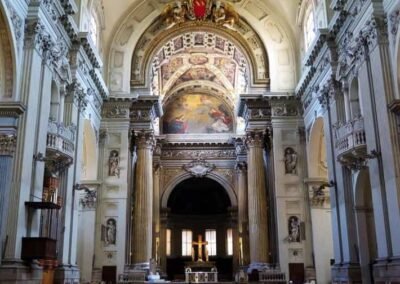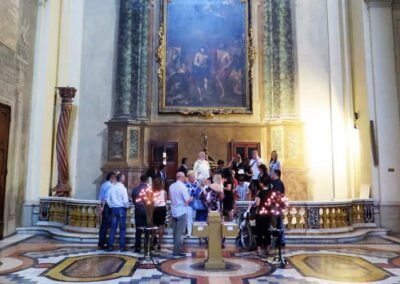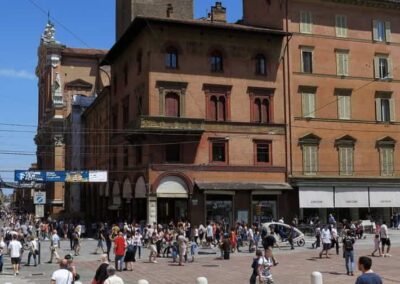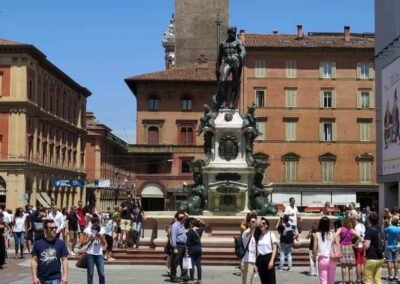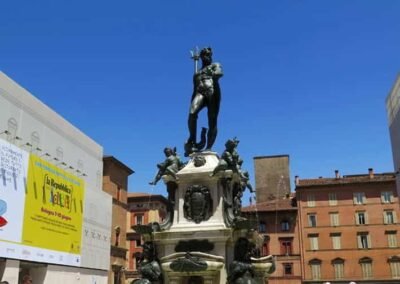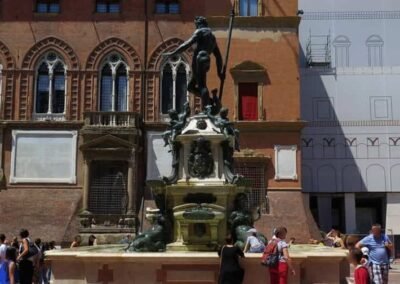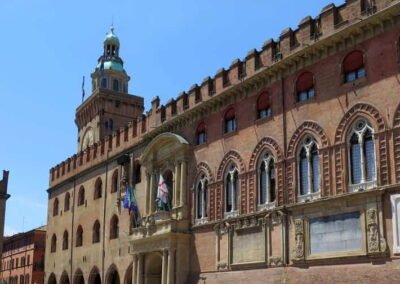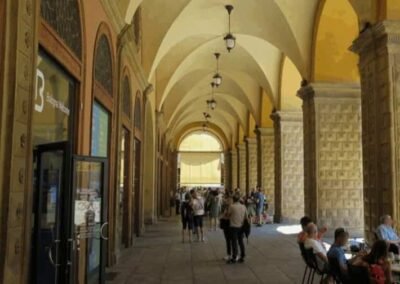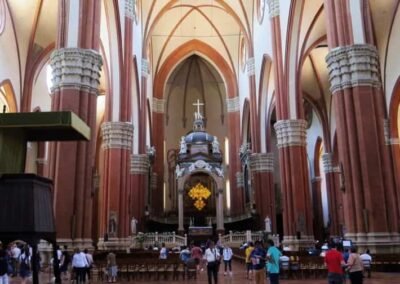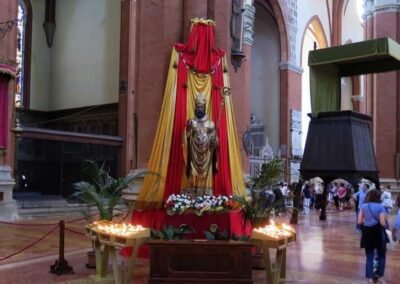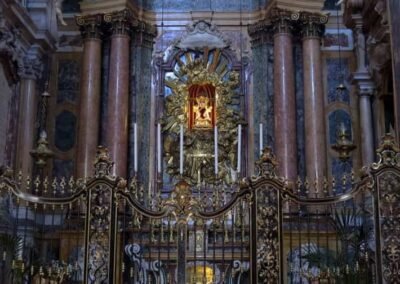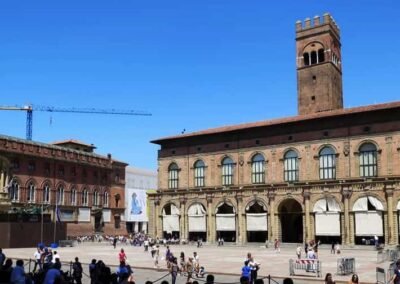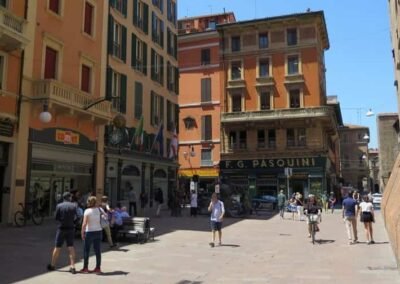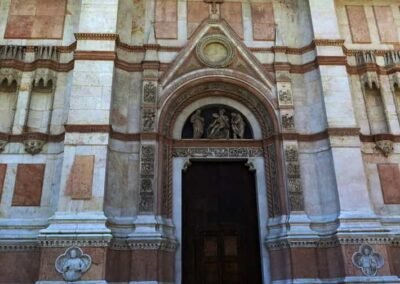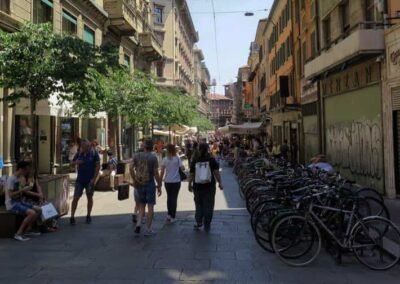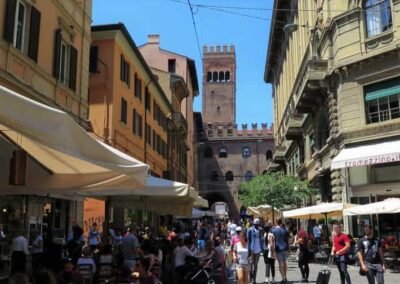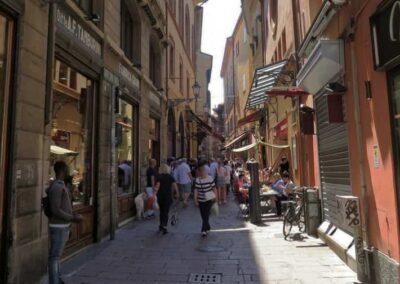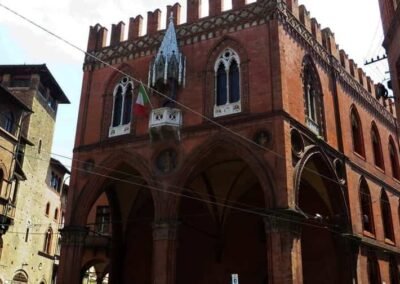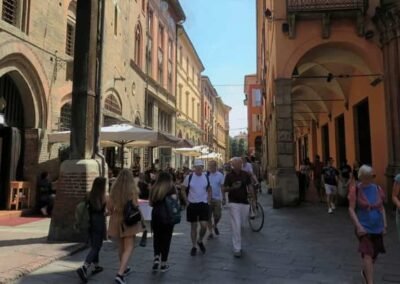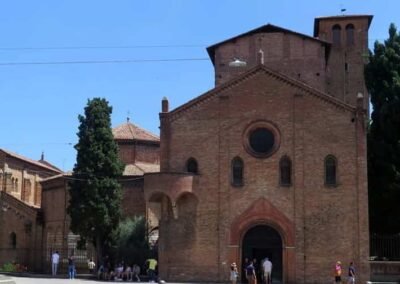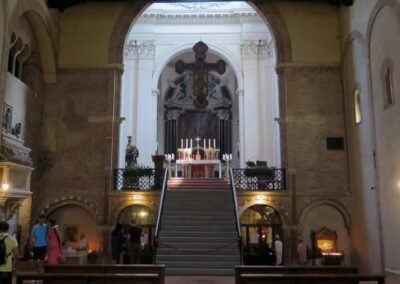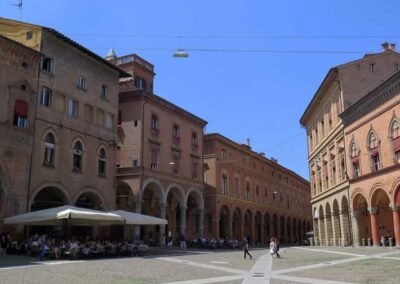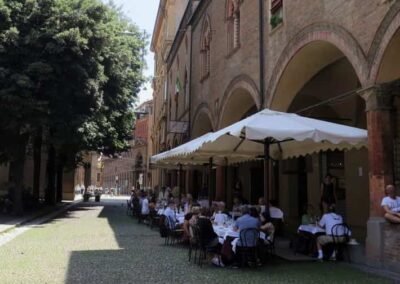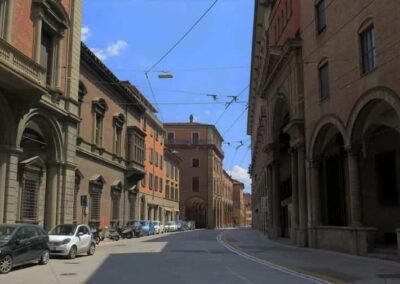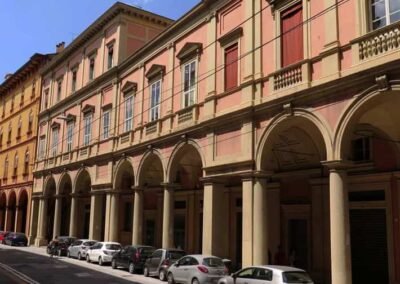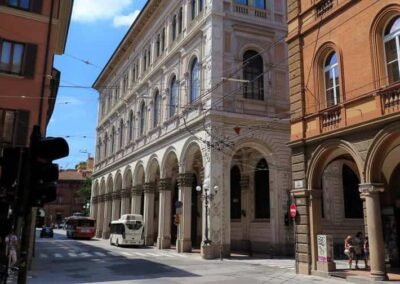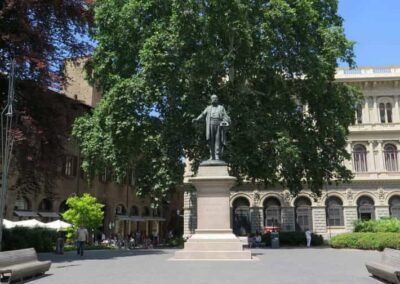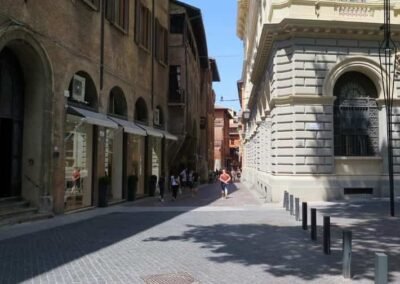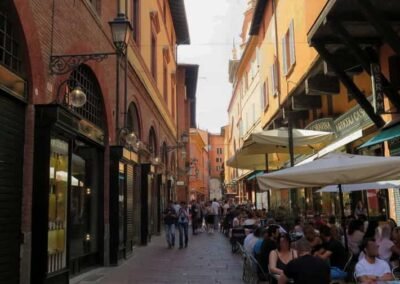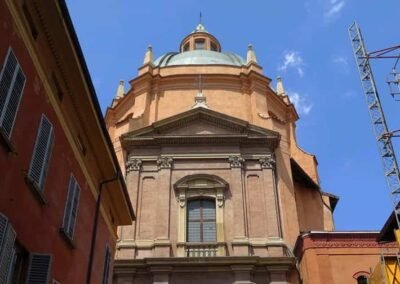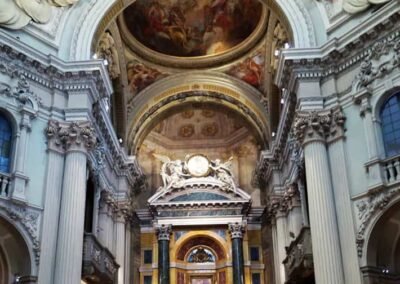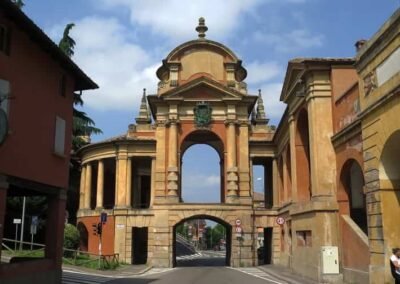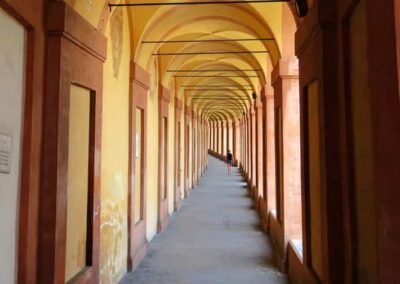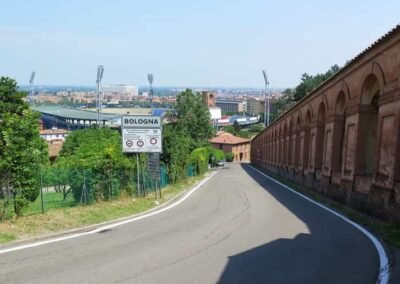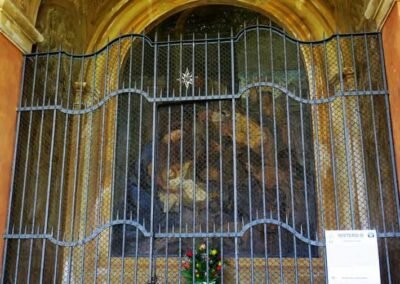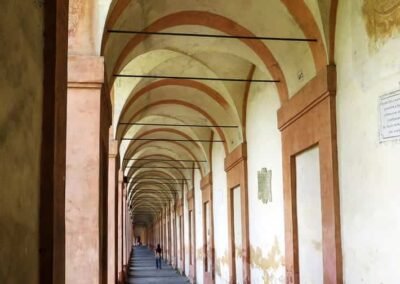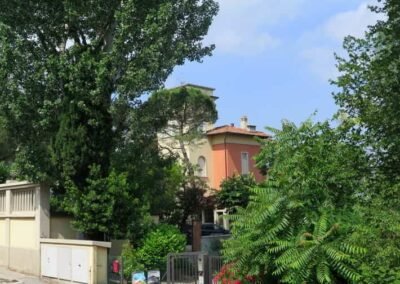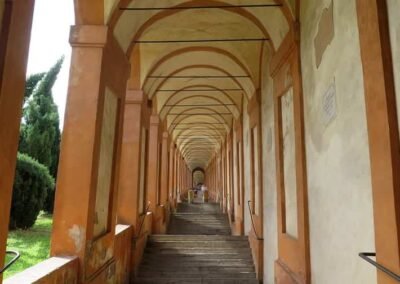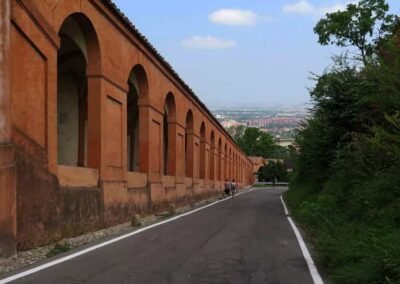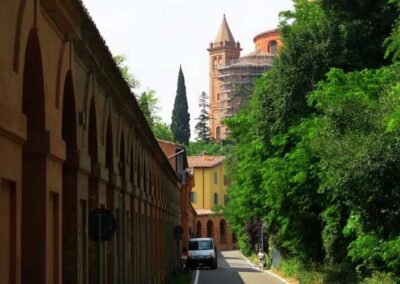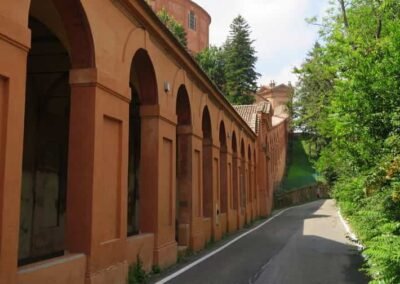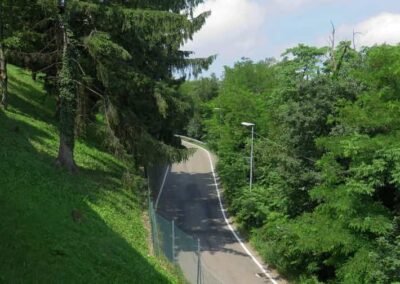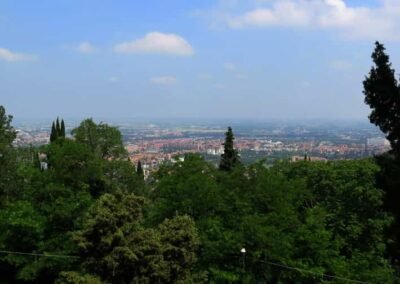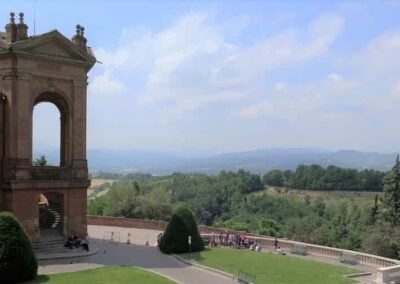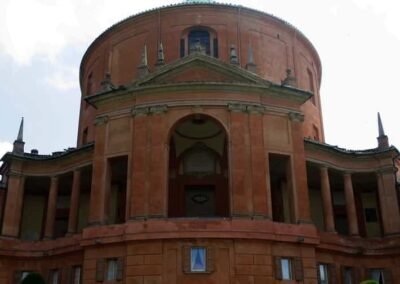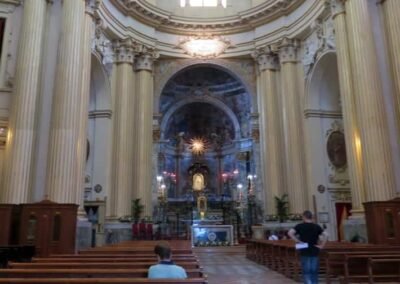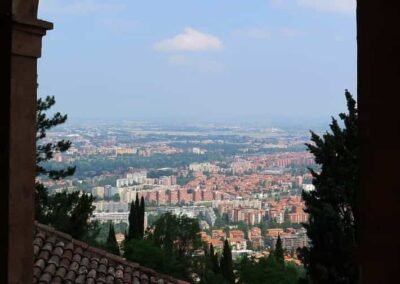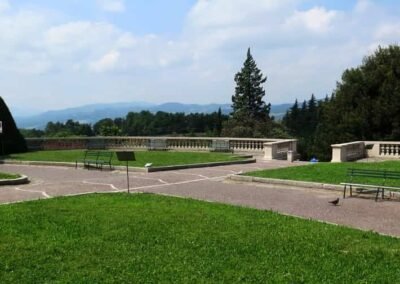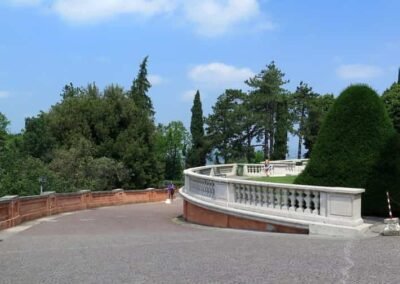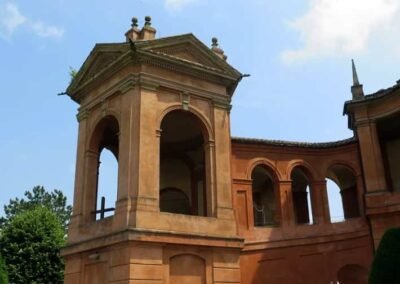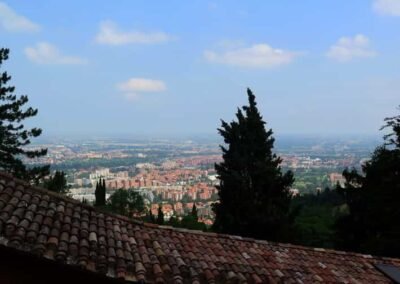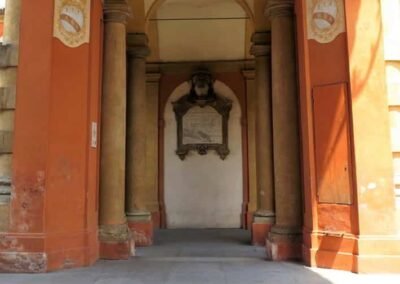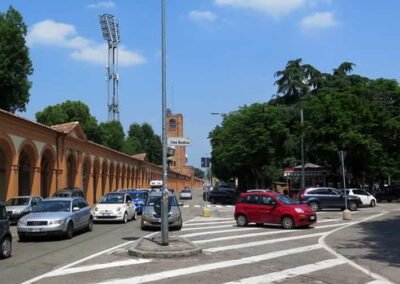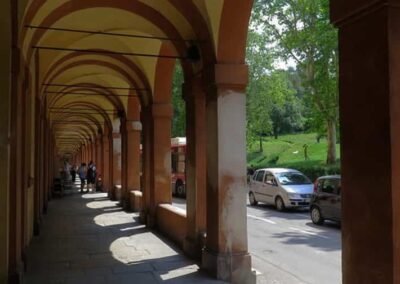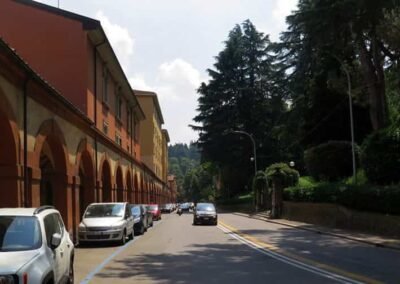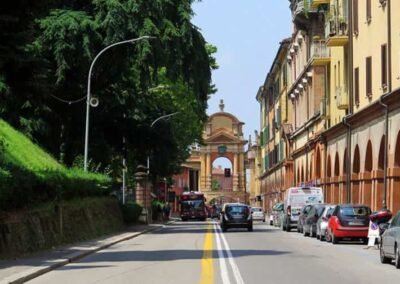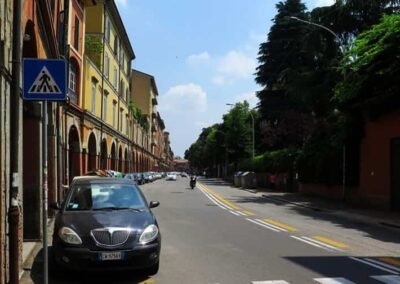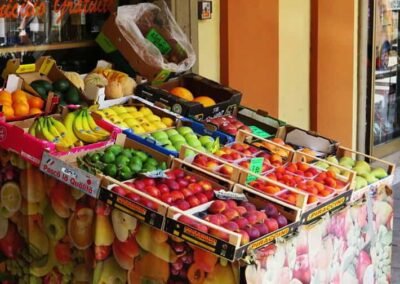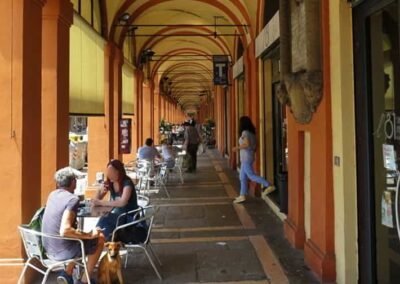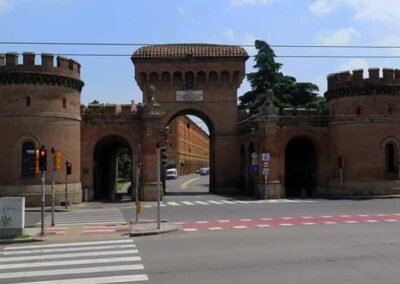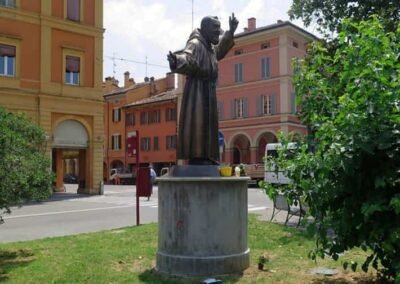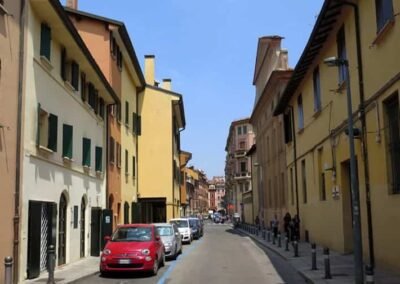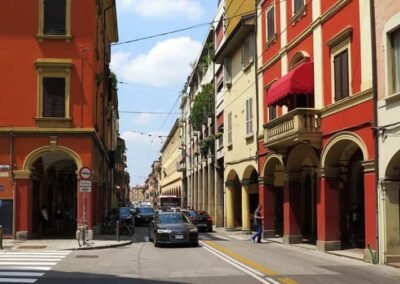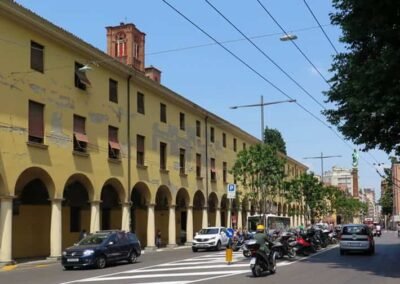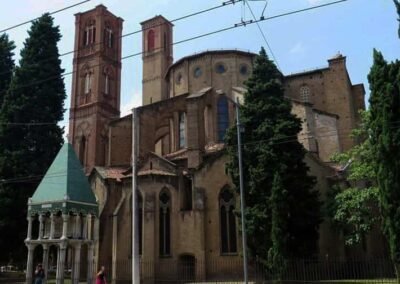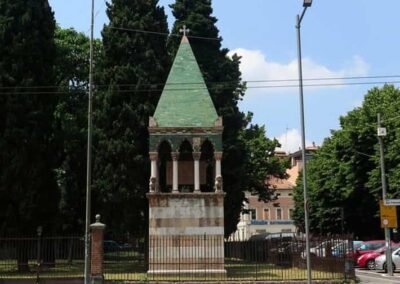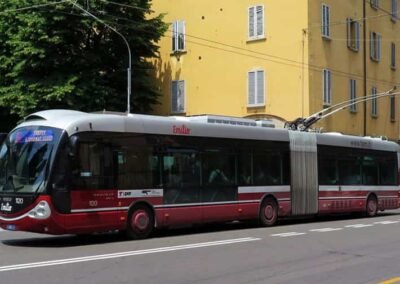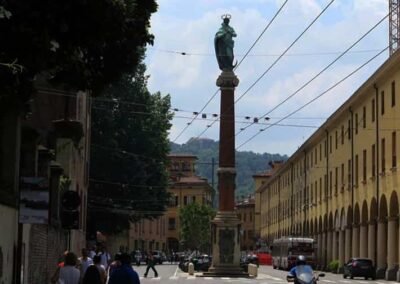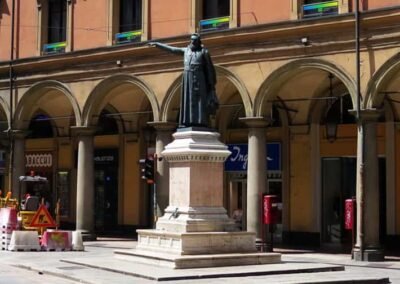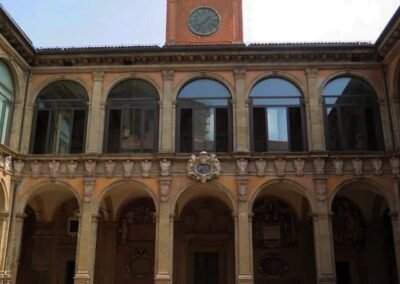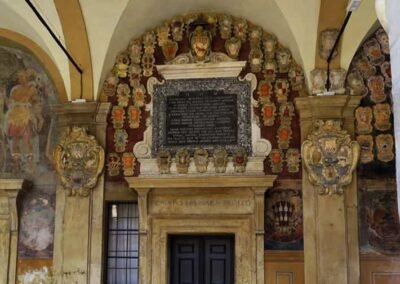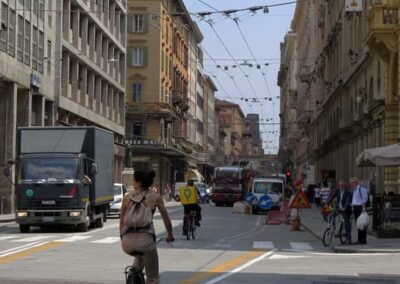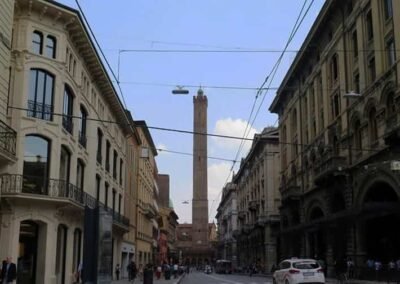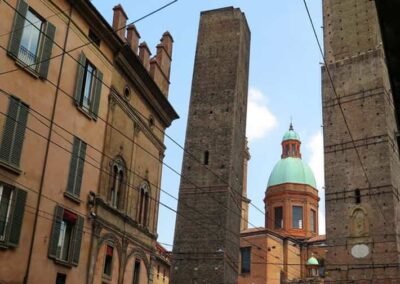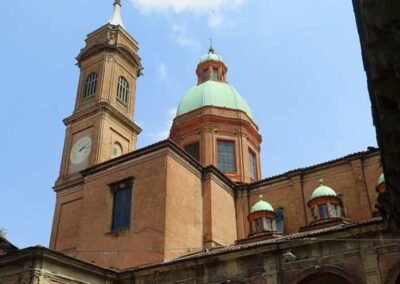HOME
THE REGIONS OF ITALY
PLACES IN ITALY
Italy in Photos
Via Saragozza, 40135 Bologna, Italy (June 2018)
Bologna
Bologna, the capital of the Emilia-Romagna region in northern Italy, is a city that perfectly blends history, culture, and a vibrant modern spirit. Known for its rich heritage, warm hospitality, and world-famous cuisine, Bologna has long been a crossroads of ideas, trade, and learning. Its origins date back to the Etruscan period, and through the centuries, it has grown into a thriving city that embodies both the elegance of the past and the energy of the present. Bologna’s well-preserved medieval centre, with its red-brick buildings and miles of covered porticoes, gives the city its distinctive character and enduring nickname, La Rossa, “the Red One.”
One of Bologna’s most remarkable features is its portico network, which stretches for more than forty kilometres throughout the city. These graceful arcades, recognized as a UNESCO World Heritage Site, provide shelter from sun and rain and give Bologna its unmistakable rhythm. Strolling under them, visitors can admire elegant palaces, small artisan shops, and vibrant cafés that reveal the city’s lively social life. At the heart of Bologna lies Piazza Maggiore, a grand square surrounded by architectural masterpieces such as the Basilica of San Petronio, the Palazzo d’Accursio, and the Palazzo del Podestà. The medieval towers of Asinelli and Garisenda rise nearby, serving as enduring symbols of Bologna’s historic skyline.
Bologna is also a city of knowledge and creativity. It is home to the University of Bologna, founded in 1088 and recognized as the oldest university in the Western world. This academic tradition continues to shape the city’s cultural identity, attracting students, scholars, and artists from around the globe. The university’s influence has fostered a progressive and youthful atmosphere, blending intellectual curiosity with artistic innovation.
Equally famous is Bologna’s culinary excellence. Often called the gastronomic capital of Italy, it is the birthplace of iconic dishes such as tagliatelle al ragù (known internationally as Bolognese), tortellini in brodo, and mortadella. The surrounding region produces some of Italy’s most prized ingredients, including Parmigiano Reggiano, balsamic vinegar, and fine wines from the nearby hills. Bologna offers an experience that is both authentic and sophisticated. Its medieval streets, academic legacy, and irresistible cuisine combine to create a city that celebrates life’s pleasures with intelligence and style. For travellers seeking a true taste of Italy—both literal and cultural—Bologna is an unforgettable destination.
Worth a Visit
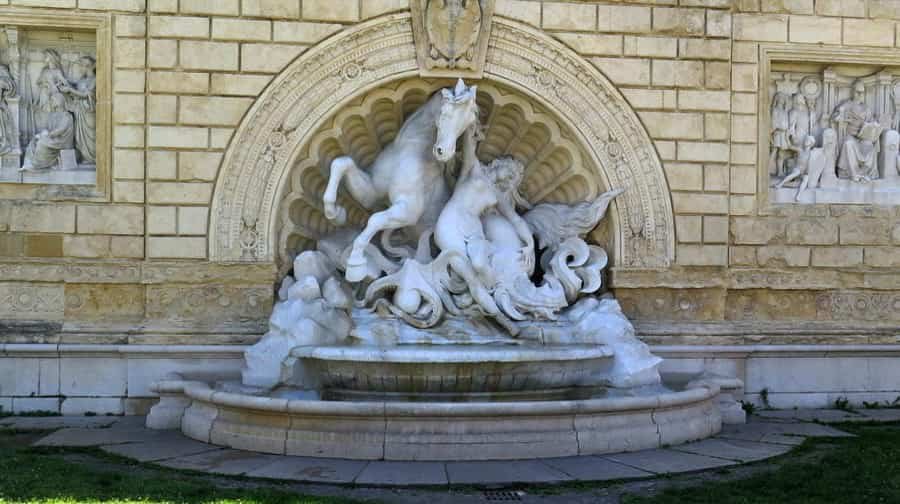
Piazza XX Settembre is a prominent and bustling urban square in Bologna, located just north of the central train station and in front of the leafy Parco della Montagnola, which together form a vital corridor between transit, greenery, and the historic centre. Named in 1909 to commemorate the Breach of Porta Pia and the final consolidation of Italian unification in 1870, the piazza occupies the former site of the city’s third ring of walls surrounding Porta Galliera. As one approaches from Via dell’Indipendenza, Bologna’s main post, Risorgimento boulevard connecting Piazza Maggiore to this piazza, one immediately perceives the square’s scale and civic presence.
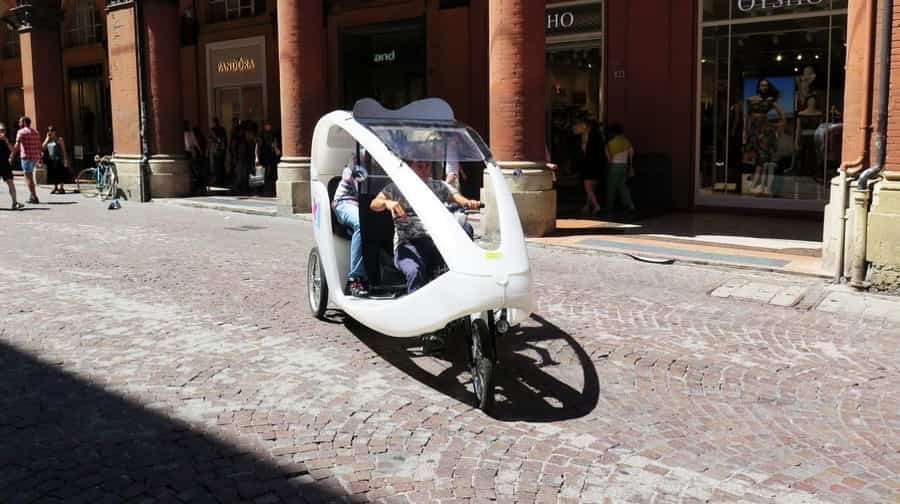
Via dell’Indipendenza is Bologna’s principal artery, stretching nearly 1,100 metres from Piazza Maggiore to Piazza XX Settembre, where it meets the train station and coach terminal. Conceived in the late 19th century, the street was a decisive urban intervention, uniting and straightening ancient thoroughfares such as Canton dei Fiori, Via Malcontenti, Campo de’ Fiori, and the Borgo di San Giuseppe, to create a grand boulevard worthy of Italy’s newly unified capital cities. The concept was initiated in 1861 by engineer Coriolano Monti, supported by Antonio Zannoni, and formally declared of public utility in 1865
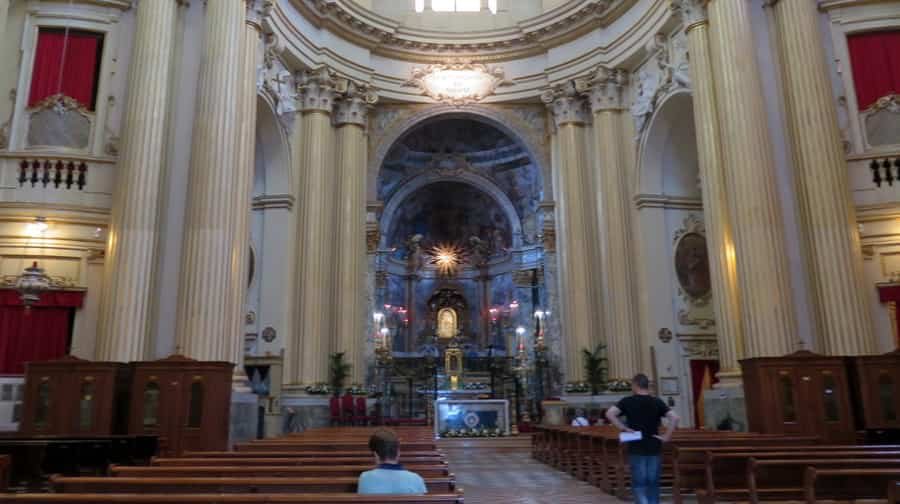
In the heart of Bologna’s historic centre, just steps from the bustling Quadrilatero district, stands the Sanctuary of Santa Maria della Vita, a remarkable church that blends Baroque elegance with profound spiritual and artistic heritage. Though often overlooked by visitors focused on Bologna’s more famous landmarks, this sanctuary is home to one of the most moving sculptural masterpieces of the Italian Renaissance and offers a unique window into the city’s religious and cultural history. The origins of Santa Maria della Vita trace back to the 13th century, when a group of flagellants known as the Battuti founded a hospital and oratory on the site. These lay penitents dedicated themselves to caring for the sick and the poor, and the name “della Vita” (“of Life”) reflected their mission of compassion and service.
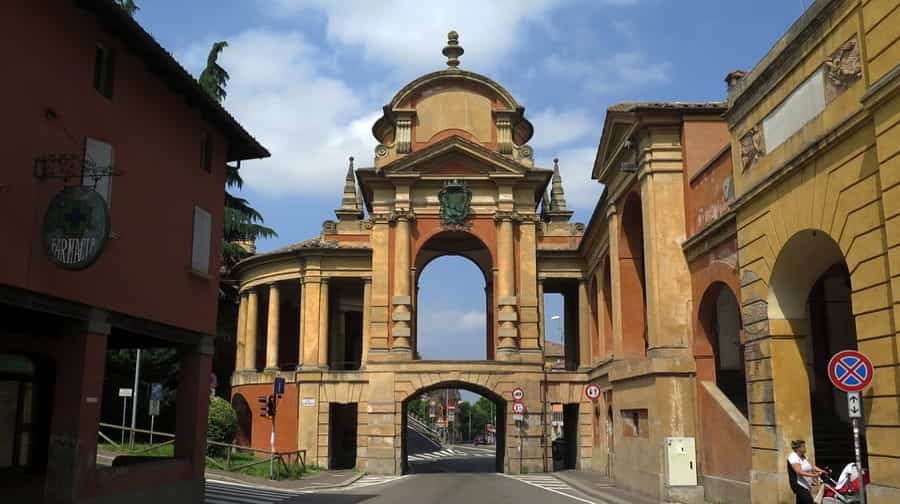
The Portico di San Luca is one of Bologna’s most iconic landmarks and a remarkable feat of religious devotion, architectural ingenuity, and civic pride. Stretching for nearly four kilometres (exactly 3,796 meters), this monumental covered walkway connects the city’s historic centre to the Sanctuary of the Madonna di San Luca, perched atop Colle della Guardia, a wooded hill overlooking Bologna. With its 666 arches, a number traditionally symbolizing the devil, which the sanctuary is said to symbolically “crush”, the portico stands as both a spiritual pilgrimage route and a beloved symbol of the city. Construction of the portico began in 1674 and continued into the 18th century, with the aim of protecting the annual procession of a sacred icon of the Virgin Mary from the sanctuary to Bologna’s Cathedral during the Ascension festival.

Perched atop Colle della Guardia, overlooking the terracotta rooftops of Bologna, the Santuario della Madonna di San Luca is one of the city’s most revered landmarks. This majestic sanctuary has long held a special place in the spiritual and cultural identity of Bologna, serving as a symbol of protection, faith, and tradition. Visible from miles away, it is both a pilgrimage destination and a beloved icon that connects the city’s medieval past with its vibrant present. The origins of the sanctuary date back to the 12th century, when a small hermitage was established on the hill. It was here that a sacred icon of the Virgin Mary and Child, believed to be of Byzantine origin, was brought from the Eastern Mediterranean by a pilgrim in 1160. Over time, reports of miracles and divine protection associated with the image drew increasing numbers of devotees, prompting the construction of a more substantial church to house the icon.
Photo Gallery of Walk 1 in Bologna – Stazione, Piazza delle Medaglie d’Oro to Via Goito
Approximately 1.21 km – 0.75 miles
The walk starts at the Stazione, Piazza delle Medaglie d’Oro – Porta Galliera, Piazza XX Settembre – Scalinata Del Pincio, Piazza XX Settembre – Rocca Galliera, Piazza XX Settembre – Via dell’Indipendenza seen from Parco della Montagnola -Via dell’Indipendenza – Via Goito
Photo Gallery of Walk 2 in Bologna – Cattedrale Metropolitana di San Pietro to Palazzo d’Accursio (Palazzo Comunale)
Approximately 1.81 km – 1.20 miles
The walk starts at the Cattedrale Metropolitana di San Pietro – Piazza del Nettuno – Piazza Maggiore – Basilica di San Petronio, Piazza Maggiore – Via IV Novembre – walk back to Piazza Maggiore – Palazzo d’Accursio (Palazzo Comunale) – Piazza Maggiore – Via degli Orefici – Piazza della Mercanzia – Via Santo Stefano – Piazza Santo Stefano – Basilica di Santo Stefano, Via Santo Stefano – Via Santo Stefano – Via Farini – Piazza Minghetti – Via Clavature – Sanctuary of Santa Maria della Vita, Via Clavature
Photo Gallery of Walk 3 in Bologna – Bologna, Portico di San Luca
Approximately 0.98 km – 0.61 miles
The Portico di San Luca is 3.8 km long and starts in Bologna at the Mura di Porta Saragozza and runs parallel to the Strada Statale 64. At the Arco Del Meloncello, which is approximately halfway along, the portico starts to climb up a hill to a height of 300 metres where the Santuario Madonna di San Luca is situated.
Photo Gallery of Walk 4 in Bologna – Piazza di Porta Saragozza to Via Rizzoli
Approximately 2.34 km – 1.45 miles
The walk starts in Piazza di Porta Saragozza – Via Frassinago – Via Sant’Isaia – Piazza Malpighi – Via Ugo Bassi – Via Rizzoli – Piazza Re Enzo – Piazza Maggiore – Via dell’Archiginnasio – Biblioteca comunale dell’Archiginnasio – Walk back to Via Rizzoli
COPYRIGHT © 2018-2025 ITALY IN PHOTOS - ALL RIGHTS RESERVED
